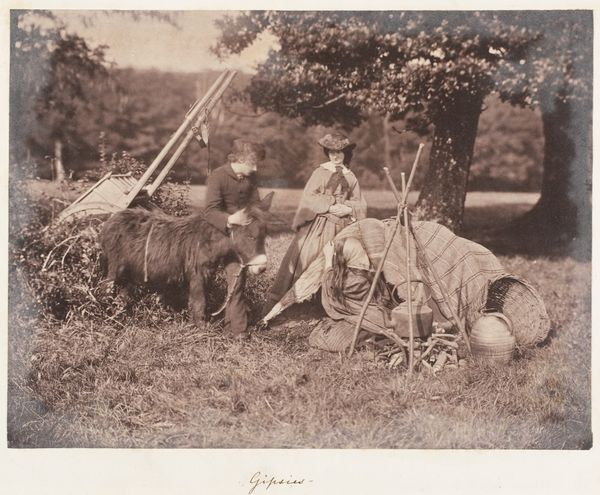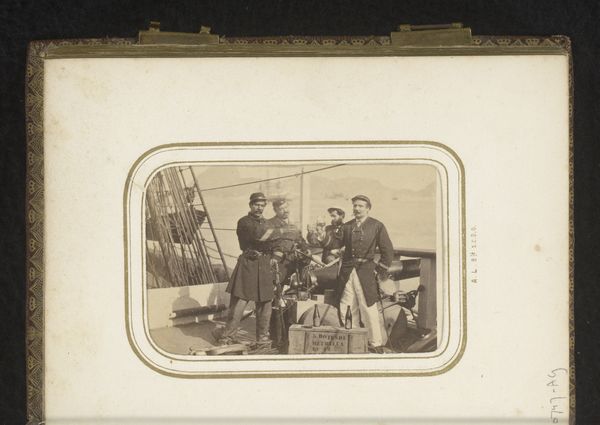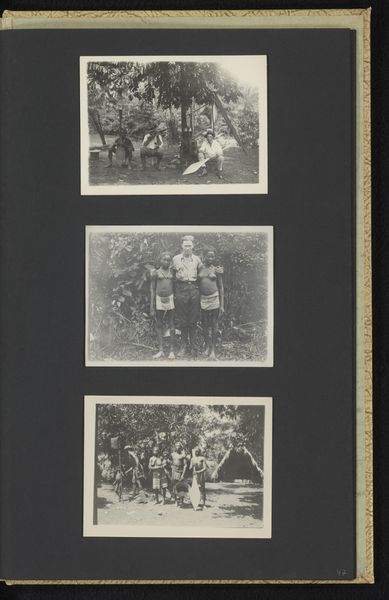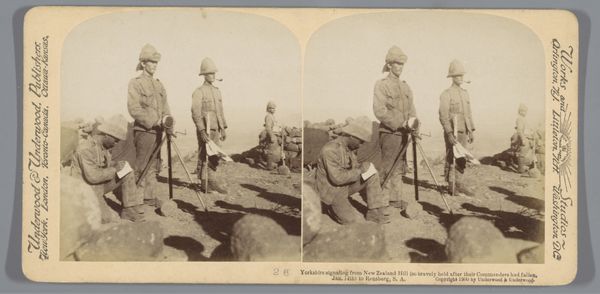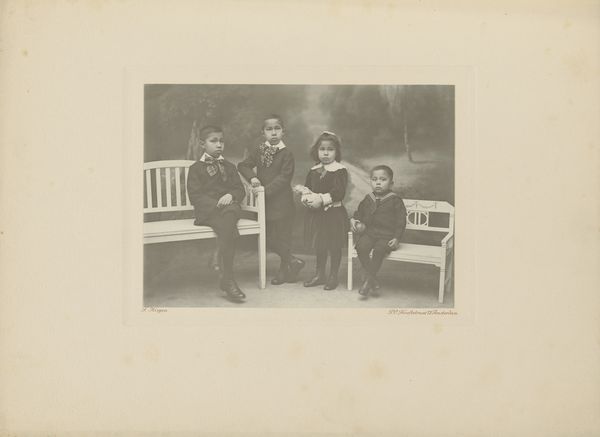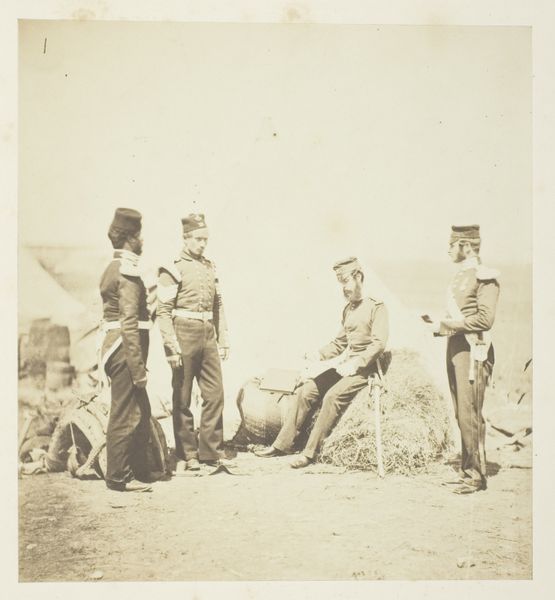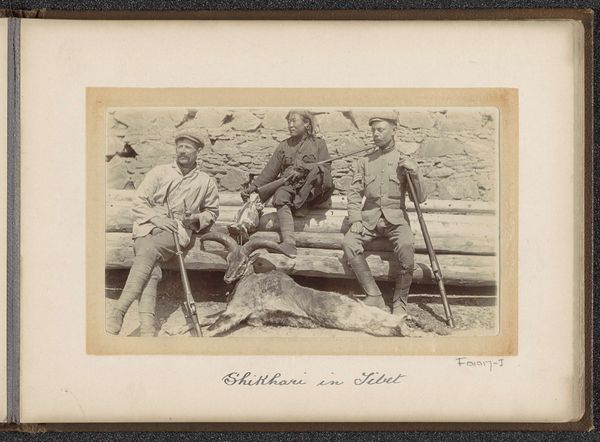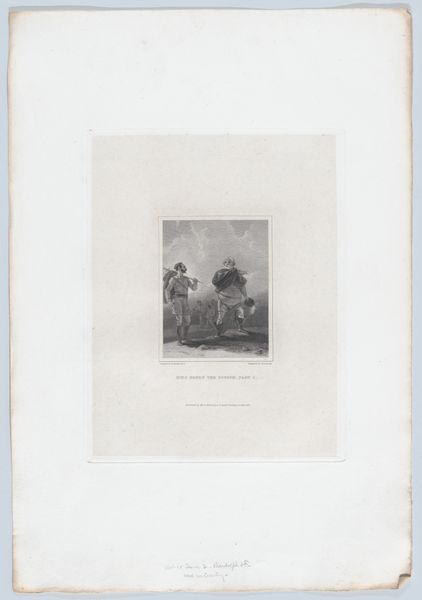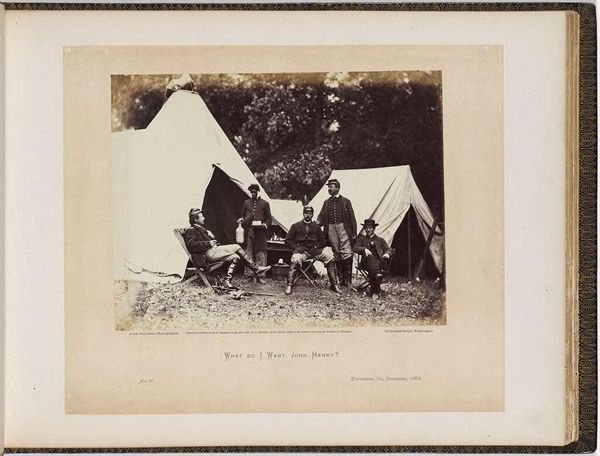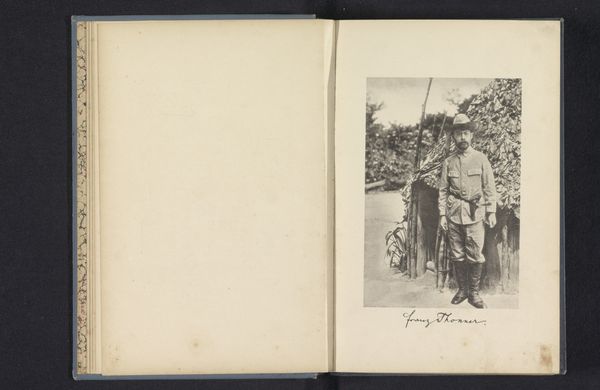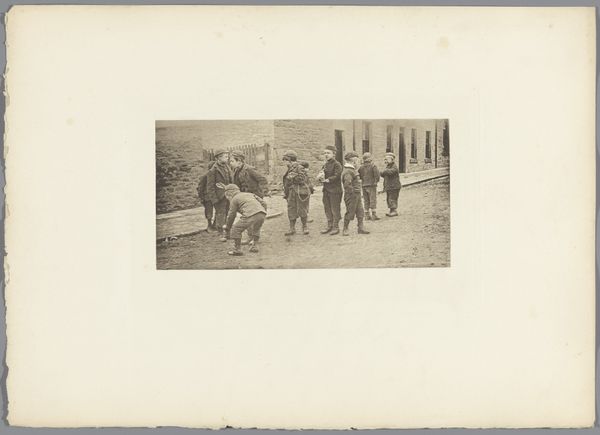![Lieutenant Washington, a Confederate Prisoner, and Capt. Custis [sic] (for Custer) U.S.A. by Alexander Gardner](/_next/image?url=https%3A%2F%2Fd2w8kbdekdi1gv.cloudfront.net%2FeyJidWNrZXQiOiAiYXJ0ZXJhLWltYWdlcy1idWNrZXQiLCAia2V5IjogImFydHdvcmtzLzdiMmZkZmU5LWYzNmUtNDdmMS05Y2NlLThiMjQxZTJkZDJhNi83YjJmZGZlOS1mMzZlLTQ3ZjEtOWNjZS04YjI0MWUyZGQyYTZfZnVsbC5qcGciLCAiZWRpdHMiOiB7InJlc2l6ZSI6IHsid2lkdGgiOiAxOTIwLCAiaGVpZ2h0IjogMTkyMCwgImZpdCI6ICJpbnNpZGUifX19&w=3840&q=75)
Lieutenant Washington, a Confederate Prisoner, and Capt. Custis [sic] (for Custer) U.S.A. 1862
0:00
0:00
photography, gelatin-silver-print, albumen-print
#
portrait
#
war
#
photography
#
soldier
#
gelatin-silver-print
#
19th century
#
men
#
history-painting
#
albumen-print
#
realism
Dimensions: Image: 3 3/16 × 4 1/8 in. (8.1 × 10.5 cm) Mount: 4 7/16 × 5 13/16 in. (11.3 × 14.7 cm)
Copyright: Public Domain
Curator: Sobering, isn't it? This is Alexander Gardner's 1862 photograph, "Lieutenant Washington, a Confederate Prisoner, and Capt. Custis [sic] (for Custer) U.S.A.," now held at the Metropolitan Museum of Art. A gelatin-silver print... it speaks volumes about power and perspective during the Civil War. Editor: Absolutely. It's got this stark stillness to it. Three figures, yes, but caught in a kind of heavy, quiet tableau. I find myself just staring into their eyes, wondering what the air felt like that day. The air of war, the air of defeat. It’s as heavy as lead. Curator: Precisely. Consider Gardner's position; a photographer documenting the war, often embedding with Union forces. These images were circulated widely, shaping public opinion. A captured Confederate officer is positioned subordinate to the Union officer and the other man there who appears to be enslaved, really illustrating the Union’s perspective on the rebellion. Editor: Right. You’ve got Capt. Custer, looking pretty self-assured; Lieutenant Washington, the defeated Confederate… But that other individual there...his downcast gaze just hits me. I mean, his very position at the feet of the others… There’s a palpable story of vulnerability there, of what it meant to be caught between armies, between fates. Curator: And that’s where the photo complicates itself. Gardner provides this depiction of the subjugated Confederacy through these figures, but also raises these difficult questions about the experiences and status of enslaved people, as well as the future status of formerly enslaved people as the war continues. Editor: It gets to me how Gardner composes this image. That stark contrast between the crisp uniforms of the officers and the...the utter simplicity of that man’s clothes, that sense of quiet despair in his posture. It just underlines the injustice and inequity. He makes you feel the human cost beyond the political spectacle. Curator: It is a pointed tableau for its time. Photos such as these helped solidify the Union narrative, they also revealed many troubling undercurrents concerning race, slavery, and social power. Editor: Well, Gardner certainly gave us more than just a war photo, didn't he? He gifted us this layered meditation on war, power, and human dignity, even in its most precarious states. Makes you think. Curator: Indeed. It is a complex intersection of history and humanity caught in a single, still moment.
Comments
No comments
Be the first to comment and join the conversation on the ultimate creative platform.
